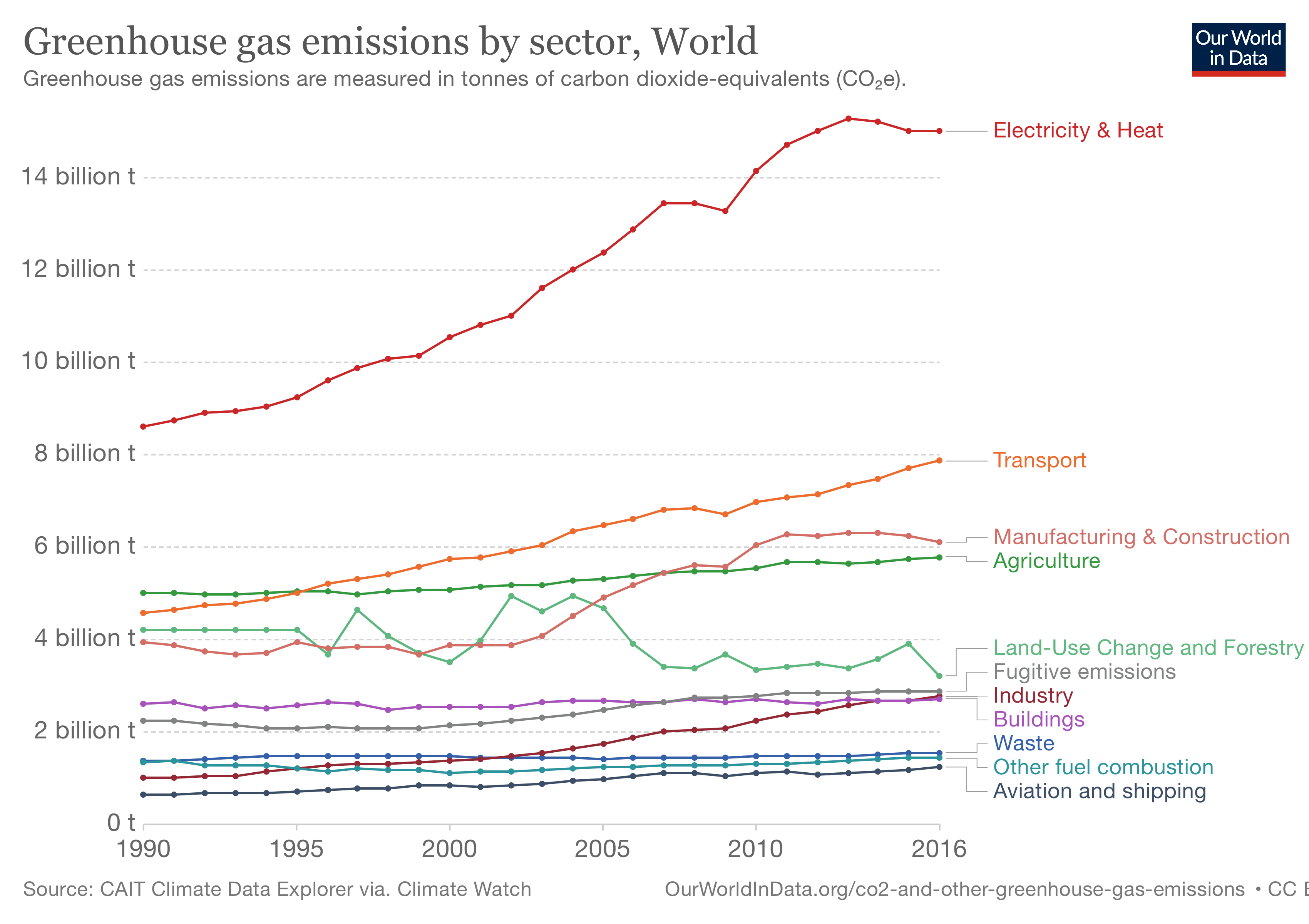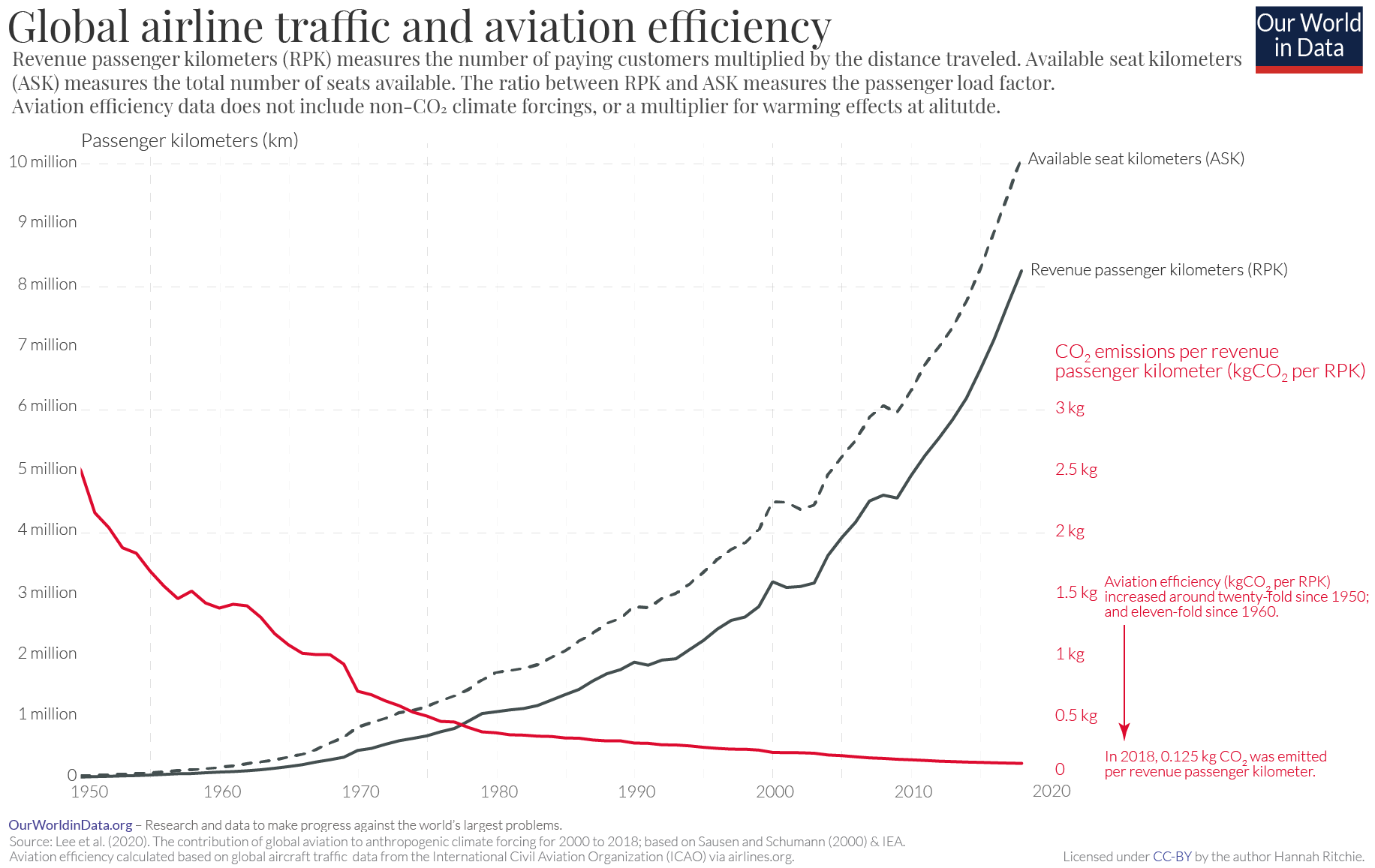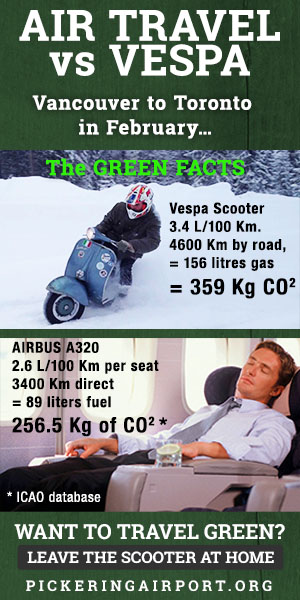“Extinction Rebellion” activists warn that we must stop all flying or we will be the last generation. They warn that aviation is standing in the way of meeting the “well below” 2C° temperature rise agreed to in the Paris accords. Stunning claims that aviation will produce a quarter of all emissions by 2050 is repeated as click bait. They are wrapped into the heart of no-fly campaigns and are used as a talking point on the evils of the “capitalist global economy”. Yet climate change deniers are all but extinct and plans are in motion for carbon neutral aviation growth and for long-term reduction in aviation emissions. So, what are the facts and what are the myths spun by attention hungry “climate justice” causes looking for a donation?
By value, one third of all international trade in goods and services moves by air. Aviation is the driving force behind our global economy, but it creates only 2.5% of manmade carbon emissions and only 1.9 % of all GHG (Green House Gas). Yet many are calling for aviation to be restricted. Climate activists want air travelers to become stay at home “inactivists”. A major reason for this is the headline-grabbing claim that aviation will create 25% of all future carbon emissions by 2050. Where did this claim come from and is it accurate?
A Myth is Born
In 2016 the website Carbon Brief published their “analysis” of the just released 2016 ICAO (International Civil Aviation Organization, a United Nations Agency) environmental assessment report. This is the first “25% in 2050” claim that we can find. In it, the detailed data provided by ICAO was cherry picked to spin a maximum growth, status quo technology what if scenario. These assumed emission figures were then compared to a “Carbon Budget” rather than against the future world’s total emissions. The implied assumption was that all other man-made emissions had been drastically reduced while aviation somehow was not.
While “What If” scenarios are always good fun, the headline was immediately picked up and reused by climate causes around the world, usually without any supporting data or the caveats of facts. The carbon budget idea soon morphed into total emissions with the ICAO report misquoted as its source. The “25% by 2050” myth was born.
It turns out that the facts are as far from the headline as you can possibly imagine. While it is true that aviation industry has been growing rapidly and emissions have doubled since 1987, over the same period aviation emissions as a percentage of all man-made emissions has grown only 0.5%. This is due to the positive correlation between aviation activity and economic growth, combined with the increasing efficiency of new jet engines. There is no indication that this will change anytime soon, and the Carbon Brief article fails to suggest any mechanism that would break the correlation.

ICAOs plans to reduce emissions and the myth.
The interesting part of the story is how aviation’s own efforts to reduce emissions has made it a target of misinformation. Aviation’s strict regulation, discipline and successful international cooperation through the United Nations to reduce emissions are exactly what the world needs to combat global warming.
ICAO (International Civil Aviation Organization) is a United Nation agency based in Montreal, funded and directed by 193 national governments to support international cooperation in air transport. The global aviation business, through ICAO’s CORSIA (Carbon Offsetting and Reduction Scheme for International Aviation) program, is committed to carbon neutral growth starting in 2020, in addition to a massive 50% Well-to-Wake GHG ( Green House Gas) reduction from 2005 levels by 2050. The ICAO plan combined with other international efforts such as IATA ( International Air Transportation Association) Airport Carbon Accreditation program, are shining examples of international cooperation and a credit to the industry. Both ICAO’s CORSIA and IATAs Airport Carbon Accreditation programs are endorsed by the Intergovernmental Panel on Climate Change (IPCC). The IPCC is a United Nations body assessing the science related to climate change.
To be fair to Carbon Brief, the intent of the original 2016 article may have simply been to use cherry picked ICAO data as a delivery vehicle in the “Carbon Budget “debate. The false “25% by 2050” narrative has turned out to be a catchy hard-to-resist opening headline, and references to a carbon budget are often dropped. But it is from their misleading work that the erroneous idea that aviation could create 25% of all man-made emissions was born.
Busting the myth.
What is a carbon budget? It is an idea that we can emit only so much more carbon before human activity exceeds a limit of 1.5°C or 2°C increase in global temperature. There is no current consensus on what this budget might be. Estimates range from “it’s already done” to 25 more years at the current emissions levels. A detailed discussion of the debate can be found on the CarbonTracker website.
With detailed data and estimates of their own creation it is easy for ICAO and aviation to be used as a talking point in this debate. This is what Carbon Brief does by using one specifically low carbon budget estimate, and then making a series of counter intuitive assumptions. While this can be excused as a serious “what if” discussion, a closer look at some of the outrageous assumptions show the impossibility of the idea that aviation will ever create 25% of human emissions.
The key assumptions include breathtaking aviation growth disconnected from the technology advancements and overall economic activity that has so far been the driving factor behind that growth. Since the 1950s, a 20-fold reduction in per seat fuel consumption per kilometer created by new technology has been driving the reduced cost of air travel. That reduced cost is in turn fueling increasing travel and a dramatic rise in global economic activity.
The key point is that aviation is part of the global economy powering billions of people out of poverty into prosperity. Why are more people flying? Because they can afford too! Aviation is key to global businesses driving growth. Economic growth raises people out of poverty. Global prosperity is the real driver of increasing emissions.

What force could possibly disconnect the positive relationship between technology advancement, fuel economy improvement and CO2 emissions? On this, the Carbon Brief article, and multiple fact-free follow up posts in mainstream and social media are mute. What is far more likely is that new technology now in development, such as hybrid electric propulsion, will achieve the opposite.
New technology can accelerate the industry’s current trend of a yearly 2% reduction of emissions per seat-kilometer traveled. The global prosperity being created can help fund and drive international emission reduction efforts. The promise of carbon-neutral air travel offered by the ICAO CORSIA program, followed by technology-enabling carbon zero air travel will be dramatic. Aviation can become the dominant form of zero emissions travel at some point in the future. This has amazing and far-reaching implications for both transportation cost and global prosperity.
The real danger would be to stop flying. 
Changes in the four years since Carbon Brief first floated the “25% by 2050” idea are a good example of future trends. Airlines have added new aircraft to the flight line and manufacturers have new technologies in the pipeline that already make the old emissions data used in the Carbon brief calculations obsolete. The new Airbus 220 is now able to achieve the 2 litre/100 km per passenger seat benchmark, a performance better that a Vespa scooter.
What could ground thousands of jets like the A220? Nothing short of a switch from free market to a command control economy. Ironically this is exactly what many doomsayers are using the “25% by 2050” myth to argue for, in the name of emissions reductions.
Aviation is often the most emission efficient way to travel long distances in many parts of the world. Restricting aviation could increase emissions by encouraging the substitution of less efficient methods of travel. It could reduce global prosperity, slow down international cooperation and decrease the adoption of new emission fighting technology. Isolationism, anti-globalization politics, misinformation and myths are the real barriers to reducing global emissions.
References:
Environmental Protection (icao.int)
Analysis: Aviation could consume a quarter of 1.5C carbon budget by 2050 | Carbon Brief
ICAO_EnvironmentalReport2016_1up.indd
Carbon Budgets Explained – Carbon Tracker Initiative
Time to Get Real About Aviation and Global Warming – Friends of Pickering Airport
Interactive: The Paris Agreement on climate change | Carbon Brief
AVIATION-BENEFITS-2019-web.pdf (icao.int)
2 thoughts on “Aviation 25% of carbon emissions by 2050 is a Myth”
Comments are closed.